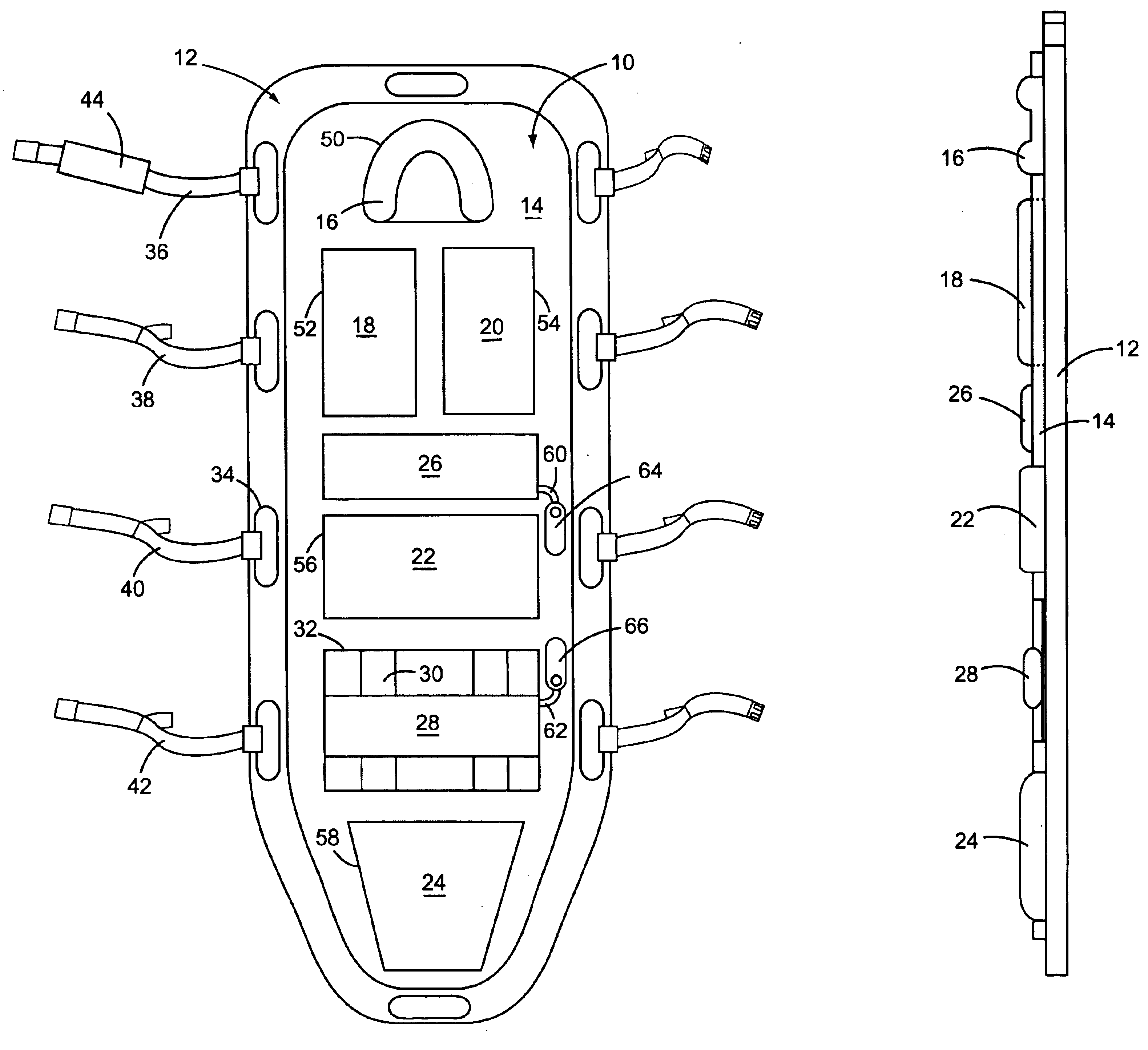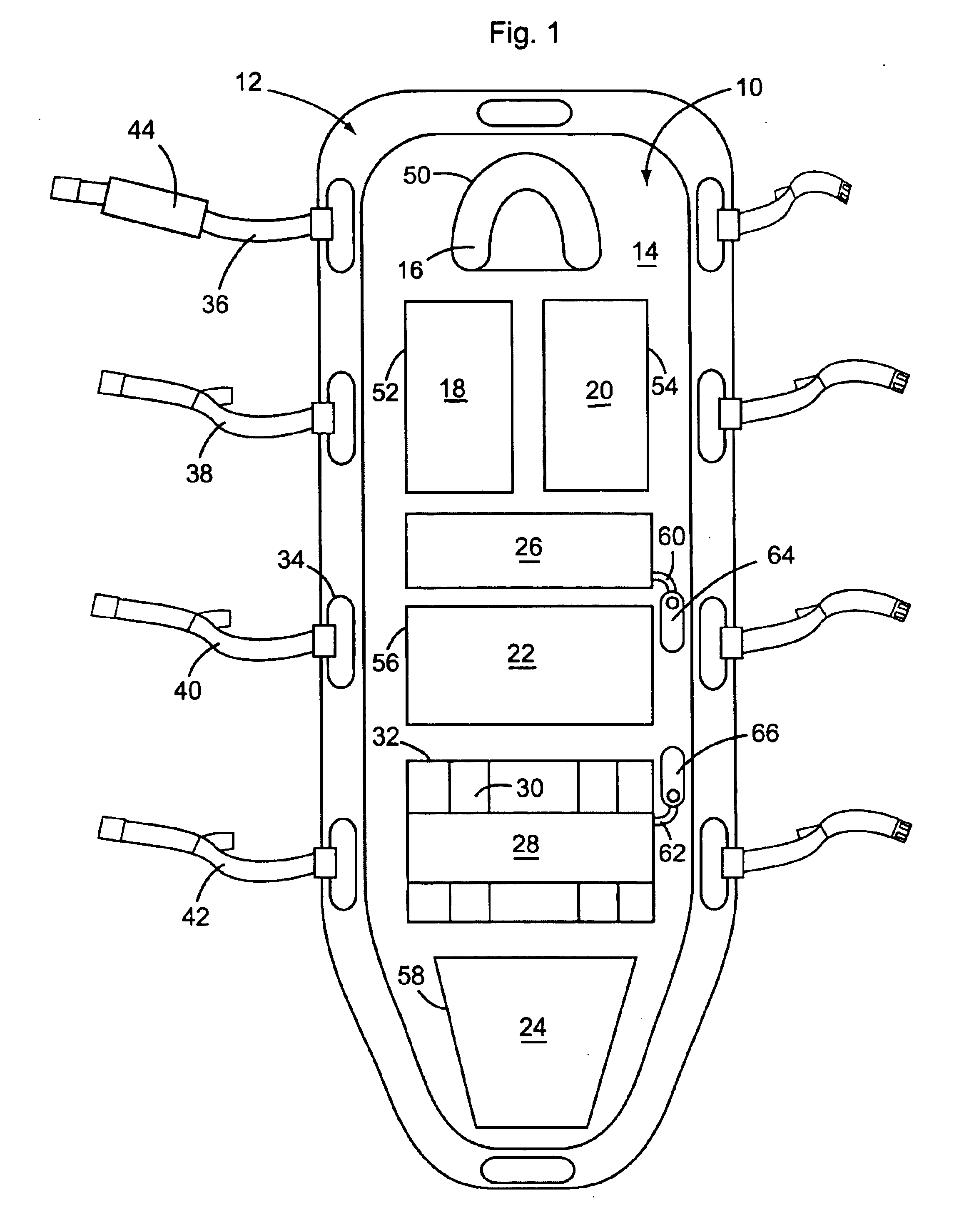Backboard with removable pad
a backboard and removable technology, applied in the field of removable backboard pads, can solve the problems of soft tissue injury, patient's body may become sore and irritated, and patients must often remain substantially immobilized, and achieve the effect of reasonable comfort and extended heat relief for patients
- Summary
- Abstract
- Description
- Claims
- Application Information
AI Technical Summary
Benefits of technology
Problems solved by technology
Method used
Image
Examples
Embodiment Construction
As illustrated, backboard pad, generally 10, adapted to be positioned on a backboard, generally 12, is comprised of a base pad 14 having upper and lower ends, opposed sides, a top surface and a bottom surface, pad 14 carrying a plurality of gel-filled sections and inflatable sections. As identified in the drawings, the gel-filled sections include headrest pad 16, scapula pads 18 and 20, buttocks pad 22, and heel pad 24. The inflatable sections are lumbar pad 26 and knee pad 28, the latter pad being slidably mounted on guide belts 30 within base pad opening 32.
Backboard 12 includes opposed sides spaced outwardly from the top, bottom and sides of pad 10, a top surface and a bottom surface, and spaced handholds 34 extending through backboard 12 between its top and bottom surfaces. A plurality of restraint belts 36, 38, 40 and 42 are attachable over pad 10 to secure a patient onto pad 10. Belt 36, used to secure a patient's head in an immobilized position on head pad 16, includes a gel-...
PUM
 Login to View More
Login to View More Abstract
Description
Claims
Application Information
 Login to View More
Login to View More - R&D
- Intellectual Property
- Life Sciences
- Materials
- Tech Scout
- Unparalleled Data Quality
- Higher Quality Content
- 60% Fewer Hallucinations
Browse by: Latest US Patents, China's latest patents, Technical Efficacy Thesaurus, Application Domain, Technology Topic, Popular Technical Reports.
© 2025 PatSnap. All rights reserved.Legal|Privacy policy|Modern Slavery Act Transparency Statement|Sitemap|About US| Contact US: help@patsnap.com



